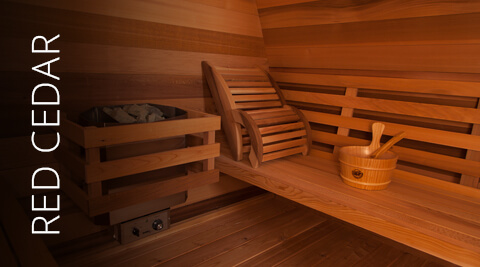What Does Traditional Sauna Mean?
Wiki Article
The Single Strategy To Use For Traditional Sauna
Table of ContentsSome Ideas on Traditional Sauna You Need To KnowTraditional Sauna Things To Know Before You Buy9 Simple Techniques For Traditional SaunaThe smart Trick of Traditional Sauna That Nobody is Talking AboutThe Traditional Sauna Ideas
Many of the weight shed in a sauna is water loss and is re-gained upon rehydrating. Nonetheless, undoubtedly sauna can be an integral part of a healthy fat burning program. To check out the differences between traditional and IR saunas, I will certainly divide these right into verifiable, academic, and fabricated differences.Thus, the best point in the saunawhich goes to the ceiling directly above the sauna heateris usually between 185 and 190 F. Claims that a traditional sauna goes beyond 200 F is just not real and not suitable for electric saunas offered in the United States. The temperature level for a far-infrared sauna is generally set between 120 and 140 F; nonetheless, unlike the traditional sauna, the objective in and IR area is not to achieve a heat.
Due to this, the temperature level distinction is almost pointless, since profuse sweating causes both sauna types, but the technique of warming the body is different. In an IR sauna the bather will certainly really feel hot and will certainly sweat profusely, however at a lot reduced temperatures (Traditional Sauna). Hence, if the goal is to invest longer amount of times in the sauna, the IR sauna is an excellent option
When a traditional sauna has been correctly heated up, the sauna walls are cozy, the air temperature level has actually achieved set temperature and the rocks are very warmed. As an interesting side note, the heated wall surfaces and the rocks are producing far-infrared warmth, incorporated with the warmed air, to produce an "covering warm".
The 9-Minute Rule for Traditional Sauna

When the heat is attained, the elements cycle on and off to preserve the high temperature. A lot of standard sauna customers take pleasure in putting water over the rocks to develop heavy steam to increase sauna moisture levels. The advantages of pouring water over the rocks consist of: making the space extra comfortable, moistening the nasal passages, and permitting the usage of aromatherapy by mixing essential oils with the water.

When the energy gets click to read in the body, it causes the body temperature level to enhance and ultimately results in perspiration. In an infrared sauna it is essential for the emitters/heaters to continue to be on virtually continuously. Considering that there is no mass of rocks to keep heat, the sauna will certainly cool down if the emitters turned off.
As pointed out over, the sauna bather in an infrared space wants to position himself before running emitters to get optimal take advantage of the heat. The home heating time for both spaces can be really different, relying on how the areas are used. For a typical sauna, a bather ought to allow 30-40 minutes for the area to achieve a preferred temperature level and to properly pre-heat the rocks.
Traditional Sauna - An Overview
A well created sauna will commonly attain a temperature level of 150-160 F in concerning 30-40 my response mins. For hotter temperatures, the room may require to warmth for a longer duration.

Typical saunas tend to be bigger (thus make use of more power) than infrared saunas, although conventional saunas are absolutely offered in one and 2 person dimensions. For a two-person conventional sauna, 5x6 or 5x7 dimension is most popular. The leading bench can pleasantly seat two or three people and is also long enough to relax during the sauna session.
Getting The Traditional Sauna To Work
The typical expense per kWH of power in the U.S. is approximately $0.11, so a 4.5 kW heater will cost about $.50 to run for one hour, if the heating system runs continuously for one hour. Normally a sauna heating system will certainly compete 75% of the initial hour and 50% of succeeding hours on given that the components cycle once the established temperature level is attained.
There is a seldom reviewed difference in the social experience between the 2 rooms. While our society has shed a few of the social benefit of the typical sauna experience, it can be extremely socially rewarding (Traditional Sauna). From family members time in the sauna, to heart-felt discussions with better halves, to sauna partiesthe typical sauna experience can result in intimate socializing
Not known Incorrect Statements About Traditional Sauna
Most greater end infrared spaces consist of colored light treatment, sound systems and full-glass fronts.Report this wiki page